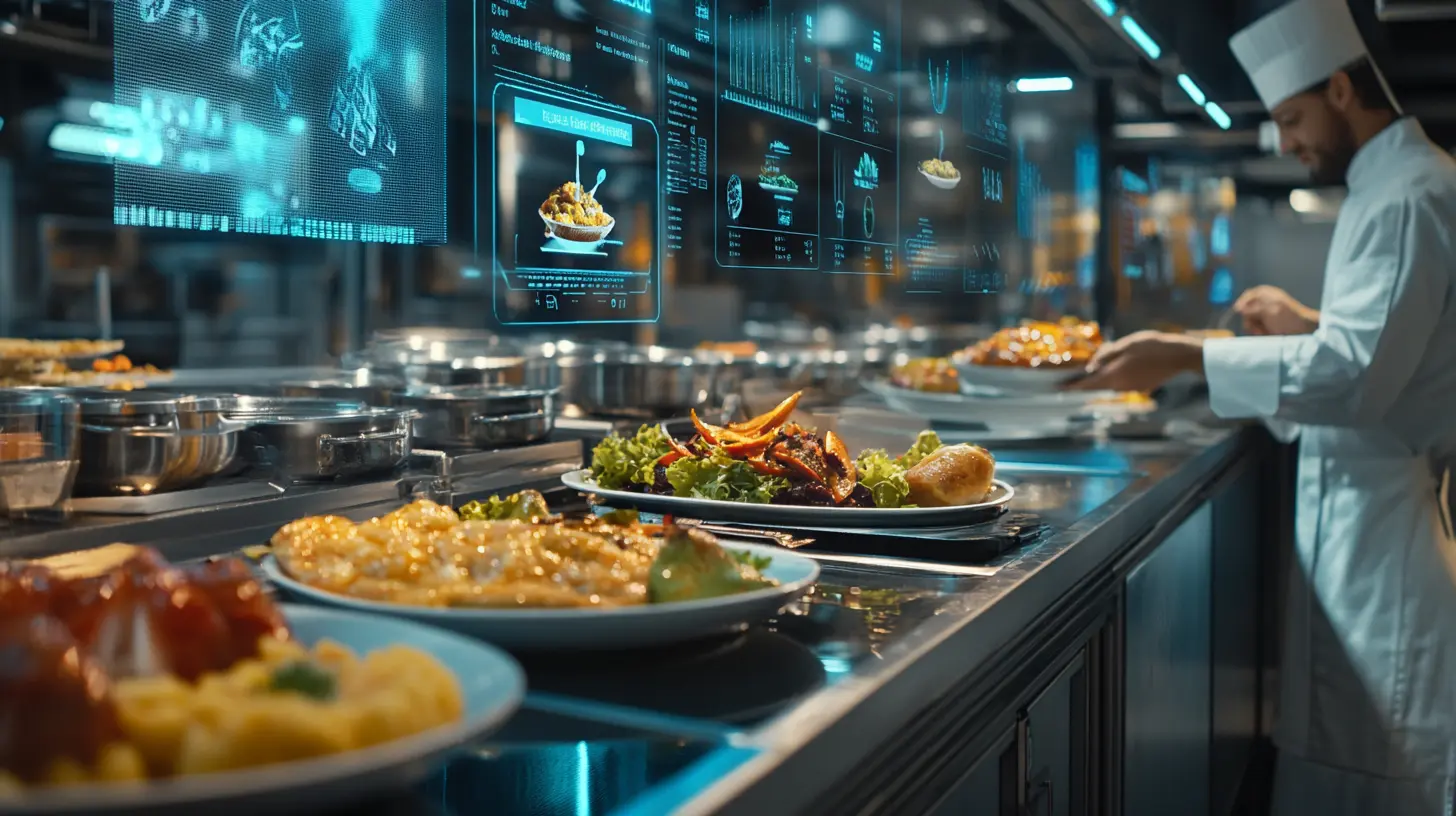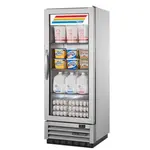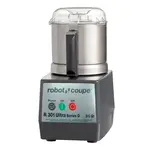
Automation in Food Service: Friend or Foe?
The food service industry stands at the edge of a technological revolution. What once seemed like a distant future is now unfolding before us, as automation increasingly infiltrates kitchens, dining rooms, and supply chains worldwide. With the rapid adoption of robotics, AI, and machine learning, automation promises to enhance efficiency, consistency, and safety. However, much like any significant shift in the workforce, this transformation comes with its own set of opportunities and challenges. Is automation in food service a friend or a foe?
The Rise of Automation in Food Service
Automation in food service encompasses a variety of technologies designed to streamline operations, improve efficiency, reduce human error, and enhance the overall quality of service. Here’s a deeper look at the areas where automation is already making a mark:
Robotic Food Preparation
Robots are becoming central to food preparation. Fast food chains like McDonald's and various high-end restaurants have started using robotic arms to flip burgers, cook fries, and even prepare pizzas. For instance, at Spyce Kitchen in Boston, robots prepare meals in a fully automated kitchen that churns out restaurant-quality dishes in under three minutes. Spyce Kitchen is a perfect example of how robots can handle repetitive tasks, leaving human chefs to focus on creative aspects of cooking, which ultimately leads to better productivity.
2. AI-Driven Ordering Systems
In many quick-service restaurants (QSRs), automation has moved beyond the kitchen. Fast food chains like Wendy’s and KFC have begun experimenting with AI-powered ordering systems. Wendy’s FreshAI platform, developed in collaboration with Google Cloud, allows customers to place orders in multiple languages and receive more accurate and quicker service. This system can adjust to customer preferences and take orders without requiring human interaction, leading to improved efficiency and reduced errors.
3. Self-Service Kiosks and Digital Menus
Self-service kiosks have become ubiquitous in restaurants across the world. These interactive systems allow customers to browse the menu, place orders, and make payments all from one digital interface. The use of self-service kiosks eliminates the need for waitstaff to take orders, thus reducing labor costs and speeding up the overall customer experience. Moreover, digital menus can be updated easily and instantly, allowing restaurants to highlight new items or promotions and customize the experience for each customer.
4. Automated Inventory and Supply Chain Management
Automation also extends to the inventory and supply chain aspects of food service. Many restaurants have implemented systems that automatically track inventory, predict demand, and reorder supplies when necessary. These automated systems ensure that restaurants maintain the right levels of stock and reduce the chances of running out of key ingredients or overstocking perishable goods that might spoil. By integrating these systems, restaurant owners can optimize storage space, minimize food waste, and reduce labor costs associated with inventory management.
Advantages of Automation in Food Service
1. Increased Efficiency and Speed
Automation drastically improves the speed at which food is prepared and served. Robots can work without breaks, which means they can handle a higher volume of orders during peak times. Faster food preparation can result in reduced wait times for customers, which is crucial in industries like fast food and quick-service restaurants. With automation, kitchens can produce high-quality food at an accelerated pace, improving throughput and making better use of available resources.
2. Enhanced Consistency and Quality Control
Automation ensures that every task is performed with precision. Whether it’s grilling a burger, assembling a pizza, or packaging a meal, robots replicate actions with consistent accuracy. This consistency guarantees that the food prepared is of uniform quality, which is particularly important for chain restaurants that rely on a standardized menu experience. Additionally, automation minimizes human error, ensuring that orders are fulfilled as requested and that food quality is maintained.
3. Improved Food Safety
One of the most significant benefits of automation is the improvement in food safety. Automated systems reduce the number of human touchpoints in the food preparation process, thereby lowering the risk of contamination. Robotics can ensure precise cooking times and temperatures, which helps maintain food safety standards. For example, AI-powered cooking equipment like ovens and fryers can monitor the temperature in real-time, ensuring that food is cooked to perfection without overcooking or undercooking.
4. Cost Savings
While the initial investment in automation technology can be high, in the long term, automation offers significant cost savings. By reducing the need for manual labor, automation helps restaurants cut labor costs. In addition, automated systems like AI-based inventory management and robotic food preparation reduce waste, further saving money. Energy-efficient machines and systems can also cut operational costs, making automation an attractive option for businesses looking to improve their bottom line.
Challenges and Concerns
1. Job Displacement
One of the biggest concerns surrounding food service automation is the potential loss of jobs. As robots and AI-driven systems take on more tasks, from cooking and food preparation to order taking and delivery, there is a growing fear that human workers will be replaced. While automation can increase efficiency and reduce labor costs, it also risks putting thousands of workers out of jobs. Fast-food restaurants, which rely heavily on low-skilled labor, are particularly vulnerable to these changes. Workers in roles like cashiers, cooks, and servers might find their jobs at risk as automation becomes more widespread.
2. High Initial Investment
Though automation can reduce operational costs over time, the initial investment can be overwhelming for many small to medium-sized businesses. Robotics, AI systems, and automated equipment require significant capital to acquire and implement. This investment includes not only the cost of the machines themselves but also the expenses associated with installation, training employees to operate the systems, and maintaining the equipment.
3. Technical Challenges and Reliability
Automation is not without its technical challenges. Systems may fail due to software glitches or hardware malfunctions, disrupting operations. A robot that malfunctions during food preparation can cause delays, spoil food, or lead to an inconsistent customer experience. Moreover, automated systems rely heavily on data, and any breach in security or failure to properly update software can compromise both the efficiency and safety of restaurant operations.
4. Loss of Human Touch
In the food service industry, customer service plays a crucial role in creating an enjoyable dining experience. Many customers value human interaction and the ability to engage with staff. With automation taking over many customer-facing roles, some businesses risk losing the personal touch that customers expect. While some customers might appreciate the speed and convenience of self-service kiosks, others might feel alienated or dissatisfied by the lack of personalized service. Maintaining a balance between technology and human interaction will be essential for restaurants looking to keep their customers satisfied.
The Future of Automation in Food Service
As the technology behind food service automation advances, its impact on the industry will grow. Here are a few ways automation might evolve in the coming years:
1. AI and Machine Learning Integration
AI is expected to continue driving automation in food service. AI algorithms could be used to analyze customer data to provide more personalized dining experiences, suggest menu items, and predict order patterns. These technologies will help restaurant owners improve their operations by optimizing staffing, inventory, and menu offerings based on real-time data.
2. Robotic Kitchens and Automated Cooking
The concept of robotic kitchens will continue to evolve. Companies are already working on AI-powered cooking systems that can prepare multiple types of food with minimal human intervention. These robots can chop, stir, fry, and even plate dishes, making kitchens more efficient and allowing human chefs to focus on creative tasks.
3. Autonomous Delivery Systems
Autonomous delivery services, including robots and drones, will further streamline the food service industry. These delivery systems will be able to navigate traffic, deliver food directly to customers, and optimize routes to minimize delivery times. As the technology improves and becomes more widespread, customers can expect faster and cheaper delivery options.
4. Data-Driven Decision Making
In the future, restaurants will rely heavily on data analytics to drive every aspect of their business. Data-driven insights will help optimize pricing, menu design, inventory management, and even marketing strategies. With AI systems analyzing data in real-time, food service businesses can make more informed decisions and offer more personalized customer experiences.
Conclusion: A Friend or a Foe?
Automation in food service is undoubtedly a transformative force that brings significant benefits such as increased efficiency, consistency, and cost savings. However, the challenges—particularly in terms of job displacement, high upfront costs, and the loss of human interaction—cannot be ignored. The key for restaurants lies in finding a balance between automation and human involvement. Thoughtful integration of technology can enhance the customer experience and improve operational efficiency, but it must be done with care to preserve the value that human workers and personal service bring to the dining experience.
In the end, automation in food service doesn’t have to be a foe. When approached strategically, it can be a powerful ally that enhances restaurant operations and serves the evolving needs of customers and businesses alike. The future of food service is a collaboration between man and machine—one that, if executed well, could benefit both businesses and consumers for years to come.




